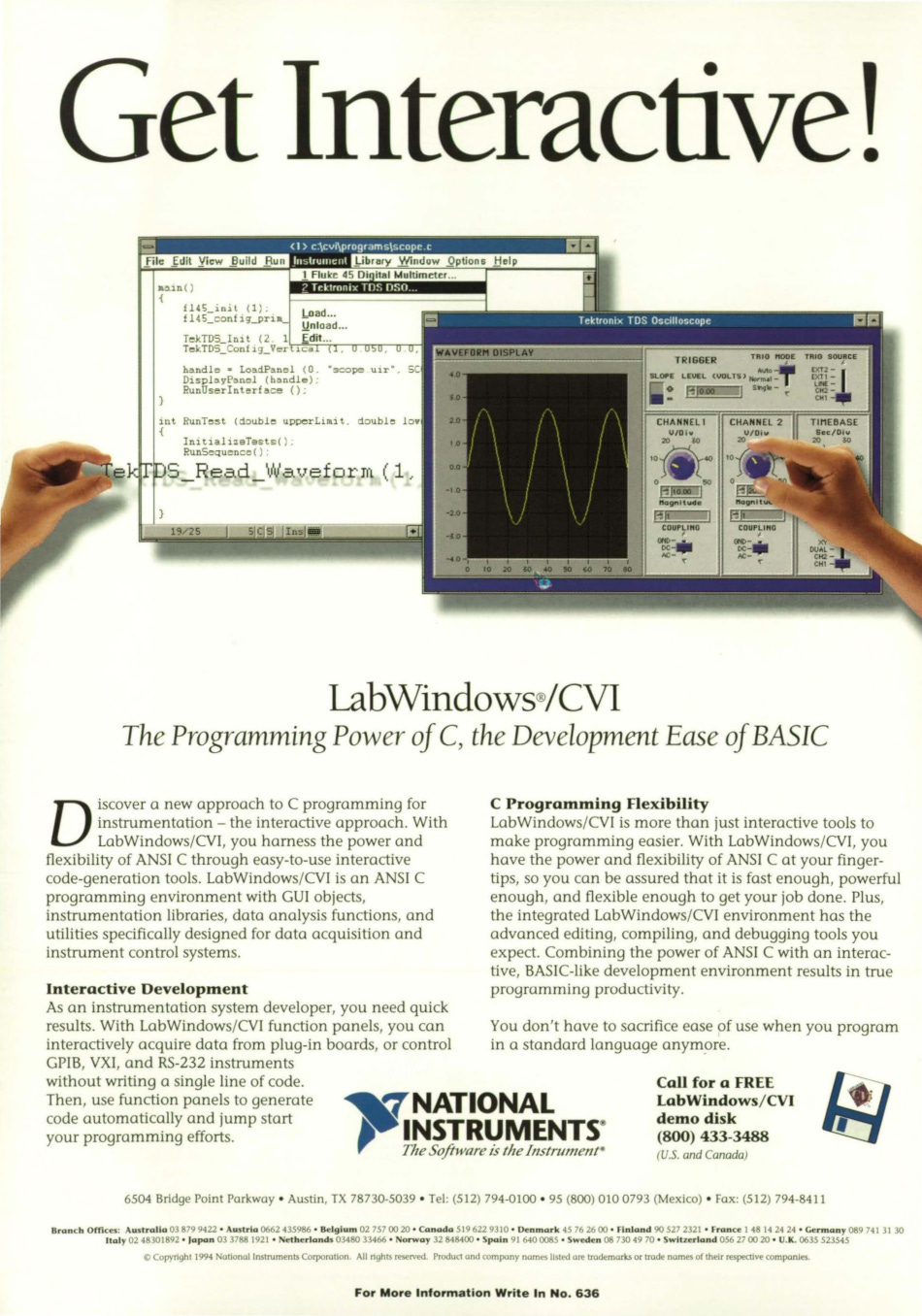National Instruments' LabWindows/CVI
The Programming Power of C, the Development Ease of BASIC
The Company
National Instruments was founded in 1976 by James Truchard, Jeff Kodosky, and Bill Nowlin. The trio has been working at the University of Texas at Austin Applied Research Laboratories on a project for the US Navy. The project used computers to collect and analyze data. The trio was unsatisfied with the tools they had to use for the project and decided to create their own. When they were filing the paperwork, they submitted several names, including Texas Digital and Longhorn Instruments. These names were rejected, so they decided to use National Instruments.
The new company got a $10,000 loan from the bank and purchased a PDP-11/04 minicomputer. Their first project was to create a general-purpose interface bus for it. Truchard said, “Using this bus, engineers and scientists could connect computers with instrumentation more easily than ever before.” In 1977, they hired their first full-time employees to “handle orders, billing and customer inquiries”.
In 1980, the trio quit their jobs at the University of Texas and dedicated themselves to National Instruments full-time. Three years later, they created the first GPIB for the IBM PC. Kodosky said, "The GPIB interface for PCs was a game-changer for NI. That got us into broad-based instrument control and really made us understand the trajectory of the PC, which changed the future of the company.”
In a 2002 article, Truchard said, “For engineers to get the most value from their designs, the tools need to work very well together. Obviously, we can put multiple design tools onto one PC, which means these tools can now be much more tightly integrated than they had been in the past."
NI decided to take advantage of the graphical tools that came with the Macintosh in 1986. LabWindows/CVI was first released for DOS in 1987. The same year, they opened their first international office in Tokyo.
National Instruments is still in business, making computer instrumentation.
The Product
According to Wikipedia, LabWindows/CVI is “an ANSI C programming environment for test and measurement”. The product page has a more detailed description:
The LabWindows/CVI ANSI C integrated programming environment helps you create custom engineering applications. You can use it to manage your project, edit and debug source code, build a user interface, and test code output and performance in one streamlined, tabbed workspace. LabWindows/CVI includes tools for advanced debugging, code documentation, and system deployment so you can integrate source code control, requirements, and data management systems. The software also makes it easier to quickly acquire data from GPIB, USB, serial, Ethernet, PXI, VXI, and FPGA instruments using the built-in instrument I/O libraries, built-in instrument drivers, or the two interactive measurement assistants.
The first version was released for DOS, but was quickly ported to Windows. The most recent version is LabWindows/CVI 2020, which was released in September 2020.
The January 1994 issue of Wireless World mentions LabWindows/CVI in their new product section:
LabWindows/CVI. National has the new LabWindows/C1/1, which is software running under Windows for developing virtual instruments using the C programming language. It expands on LabWindows for dos, which uses C and Basic. LabWindows/CV1 is a 32-bit, multiplatform environment including all tools for C-compatible test, measurement and control applications on a PC or as X Window systems for Unix SPARCstations. Dos -based Labwindows applications run in /CVI. National Instruments UK, 0635 523545.
Did you ever use National Instruments' LabWindows/CVI? Do you know anything about its history? Tell us about it in the comments below.
What computer ads would you like to see in the future? Please comment below. If you enjoyed it, please share it with your friends and relatives. Thank you.




